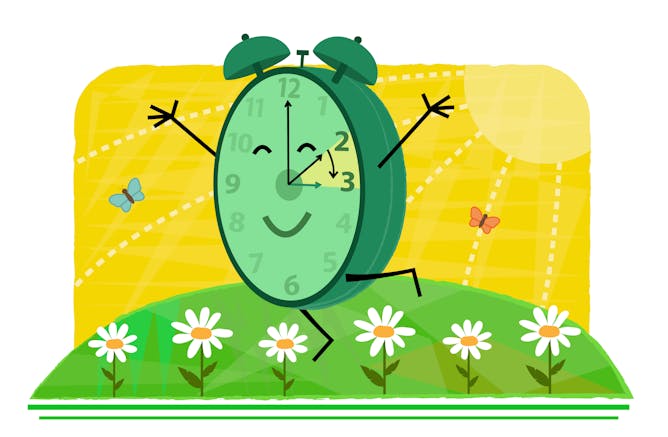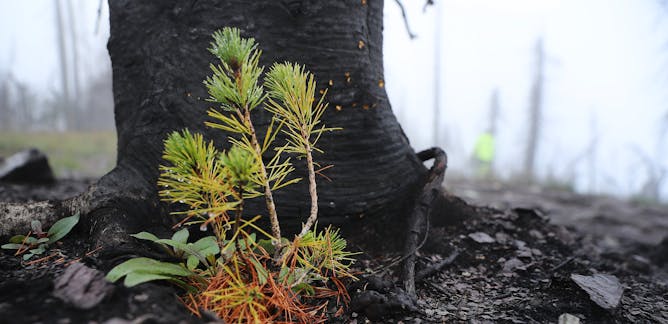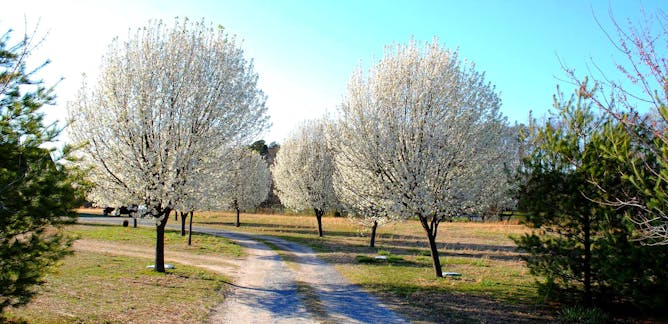|
|
|
|
It’s been five years since news out of a summit on human genome editing shook the world. An unknown scientist announced he had edited the genes of two babies to give them immunity from HIV, in a widely condemned experiment that continues to reverberate today. That same conference is taking place this week, with more discussion about the ethics of editing the genomes of humans and the power it can bring to improve people’s lives.
To get you grounded in this powerful technology, we commissioned an overview from a biochemist and a geneticist from Rochester Institute of Technology. CRISPR gene-editing technology is already showing enormous potential in curing genetic diseases but establishing international consensus on regulation and the limits on genetic modification will continue to be a challenge, they write. (In June, we will be publishing The
Conversation on Biotechnology, a book that collects a range of articles published on The Conversation and gives readers foundational knowledge in this subject.)
Another important story this week is the shift to daylight saving time. As ordinary and routine as it may seem, neurologist Beth Ann Malow from Vanderbilt University writes about the serious health consequences of “springing ahead” in particular. She walks through the ample research showing the damages time changes cause to sleep schedules and people’s circadian rhythms, and evaluates arguments for keeping the status quo. She notes that the American Medical Association recommends, as she does, a permanent shift to standard time, citing benefits to health, productivity and energy savings.
Our science editors also uncovered a number of interesting research this past week, including a paper published showing how higher temperatures and dry conditions are making it difficult for Western forests to rebound after wildfires, a study digging into how RNA is transported in cells, and a research story from two astronomers on how they expect to speed up the search for exoplanets by focusing on star systems that have more than one planet in the habitable zone that can support liquid water.
Also in this week's science news:
If there’s a subject you'd like our team of science editors to investigate, please reply to this email.
|

|
Martin La Monica
Director of Editorial Projects and Newsletters
|
|

DNA editing has the capacity to treat many diseases, but how to do this safely and equitably remains unclear.
KTSDESIGN/Science Photo Library via Getty Images
André O. Hudson, Rochester Institute of Technology; Gary Skuse, Rochester Institute of Technology
Following the controversial births of the first gene-edited babies, a major focus of the Third International Summit on Human Genome Editing was responsible use of CRISPR.
|

Daylight saving time is back again – amid some controversy.
billhagolan/iStock via Getty Images Plus
Beth Ann Malow, Vanderbilt University
Americans are divided on their preference for daylight saving time versus standard time. But research shows that our bodies fare better when aligned with the natural light of standard time.
|

The TOI-700 star system is home to four planets, including two in its habitable zone that could host liquid water.
NASA's Goddard Space Flight Center
Joey Rodriguez, Michigan State University; Andrew Vanderburg, Massachusetts Institute of Technology (MIT)
With more than 5,000 known exoplanets, astronomers are shifting their focus from discovering additional distant worlds to identifying which are good candidates for further study.
|
|
|

Kimberley Davis, United States Forest Service; Jamie Peeler, University of Montana; Philip Higuera, University of Montana
Over 50 fire ecologists across the Western U.S. took an unprecedented look at how forests in thousands of locations are recovering from fire in a changing climate. The results were alarming.
| |

Ryan W. McEwan, University of Dayton
They’re beautiful in bloom, but Callery pear trees crowd out native plants and turn productive open land into woody thickets.
|

Robert Baloh, University of California, Los Angeles
Havana syndrome has spread to government officials around the world and stumped doctors for years. Despite news of mysterious attacks, evidence suggests mass psychogenic illness may be the true cause.
| |

Holly Walters, Wellesley College
The use of AI and robotic technology in worship is raising profound questions about its long-term consequences. Will it lead to the betterment of society or replace practitioners?
|

Christopher Gordon De Pree, National Radio Astronomy Observatory; Christopher R. Anderson, United States Naval Academy; Mariya Zheleva, University at Albany, State University of New York
Many telescopes use the radio spectrum to learn about the cosmos. Just as human development leads to more light pollution, increasing numbers of satellites are leading to more radio interference.
| |

Matthew Taliaferro, University of Colorado Anschutz Medical Campus
Making sure RNA molecules are in the right place at the right time in a cell is critical to development and normal function. Researchers are figuring out exactly how they get to where they need to go.
|
|
|
|
|
-
Sheryl Barringer, The Ohio State University
Raw flour at the store still contains live microorganisms. And while cooking can kill the fungi, it doesn’t destroy any illness-causing mycotoxins that might be present.
-
April Nisan Ilkmen, Adler University
Narcissistic abuse in relationships can take the form of extreme emotional abuse. Yet both the victim and the abuser may have difficulty recognizing it.
-
Kate O'Neill, University of California, Berkeley
Humans generate a lot of trash, but there are cheaper and safer ways to handle it than loading it on rockets.
-
Jennifer Weeks, The Conversation
The Biden administration is finalizing the first federal limits on two compounds, PFOA and PFOS, in drinking water. These so-called ‘forever chemicals’ have been linked to numerous health effects.
|
|
|
| | |
| | |
| |
| |
| |
|
|
|